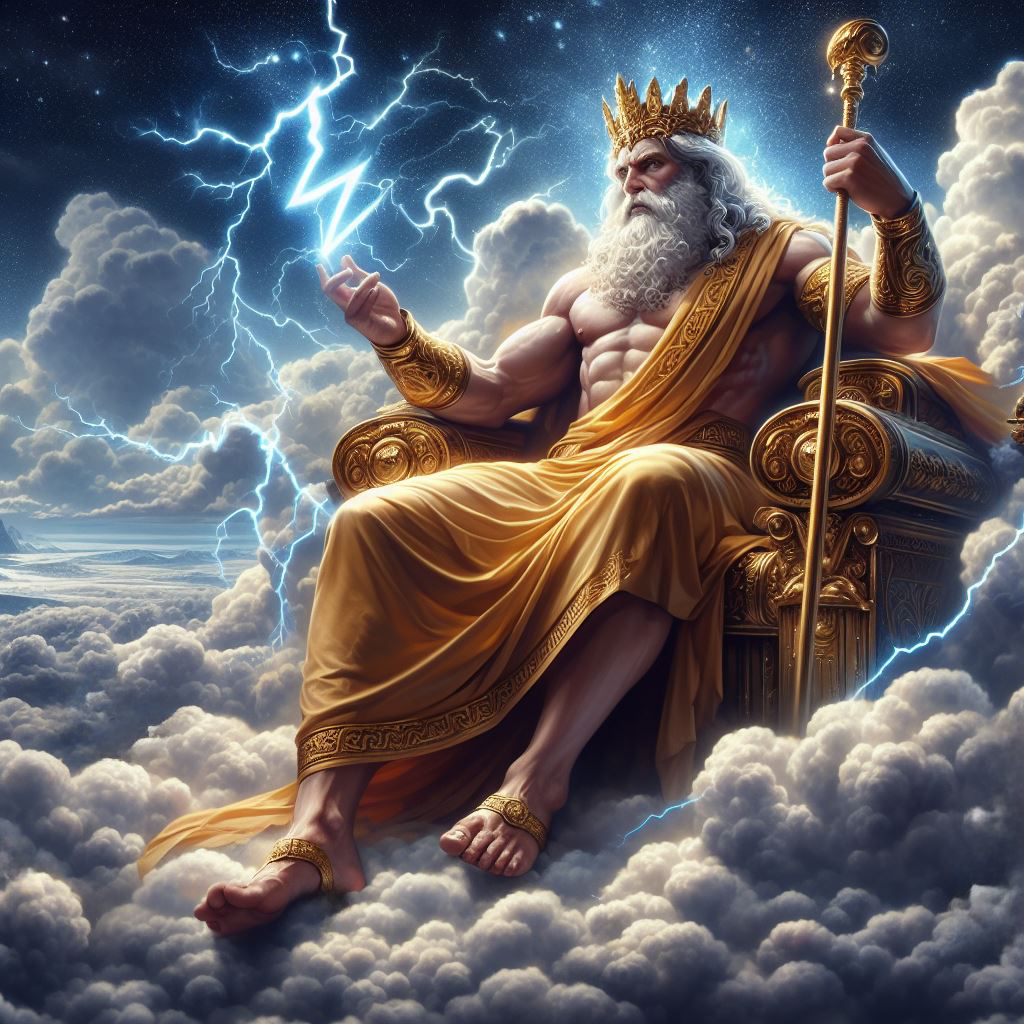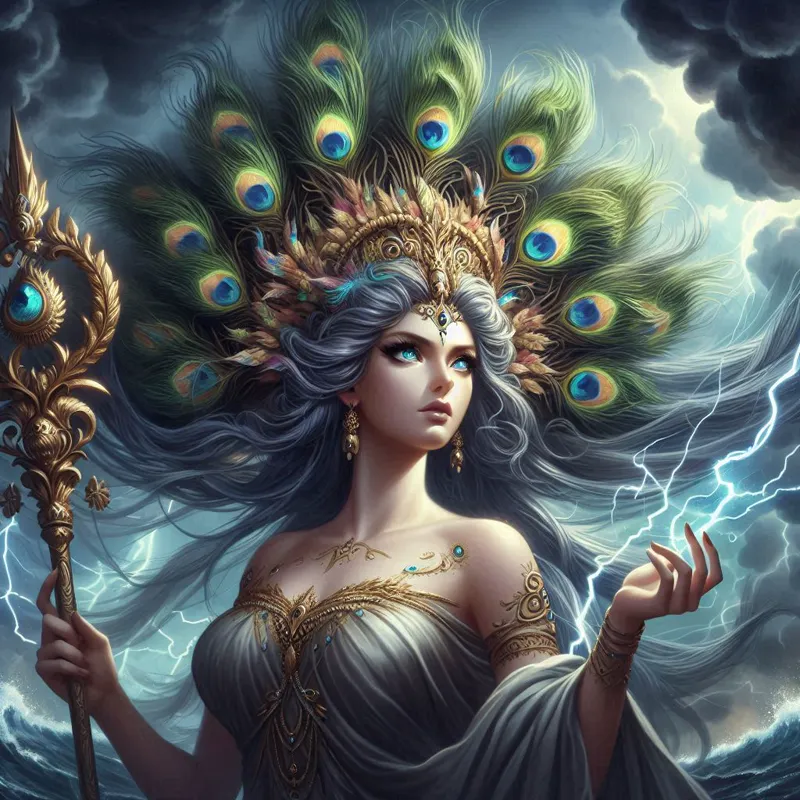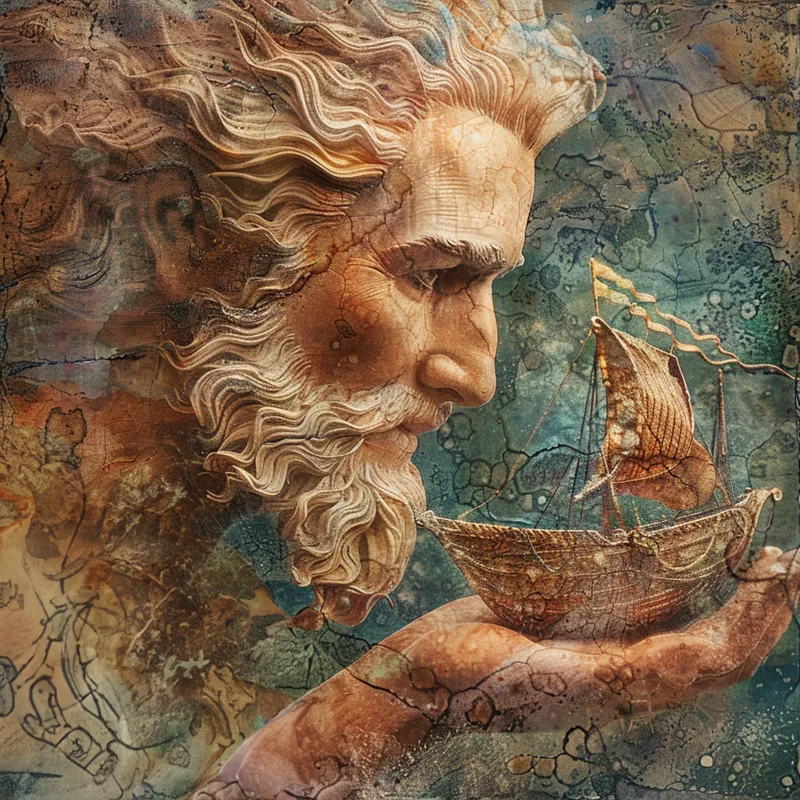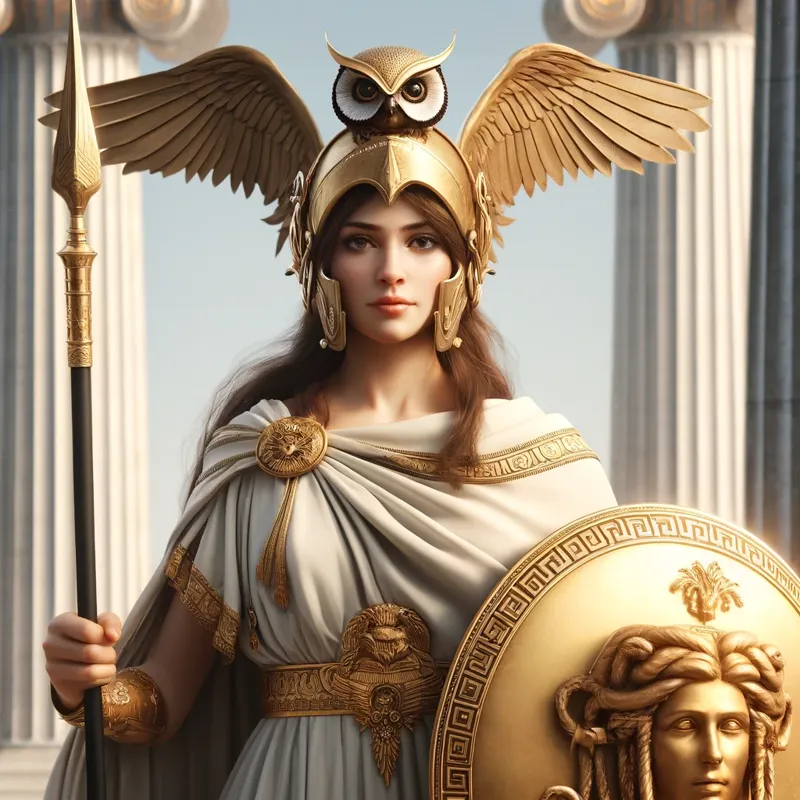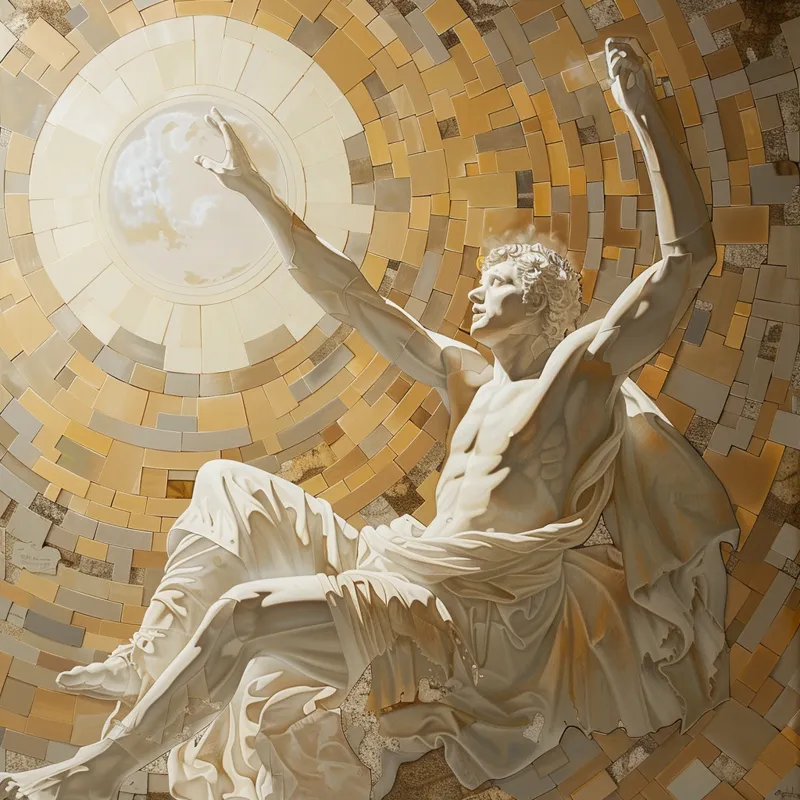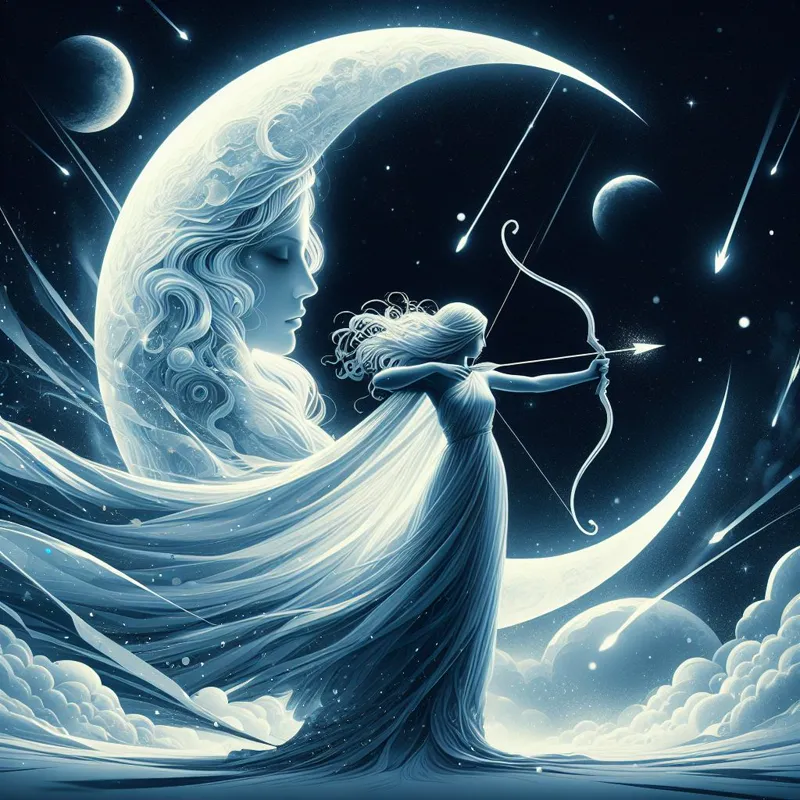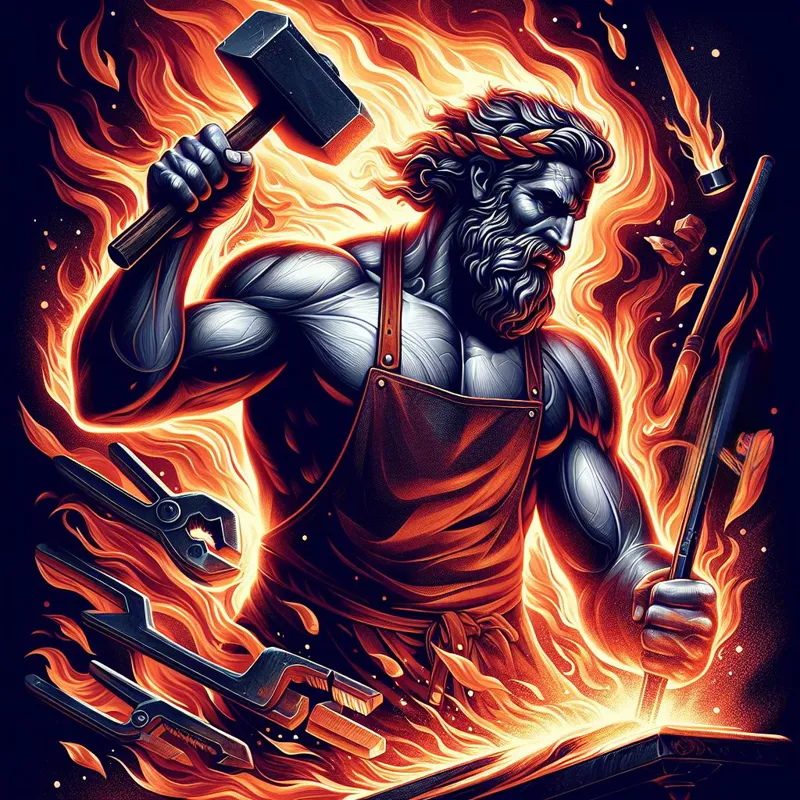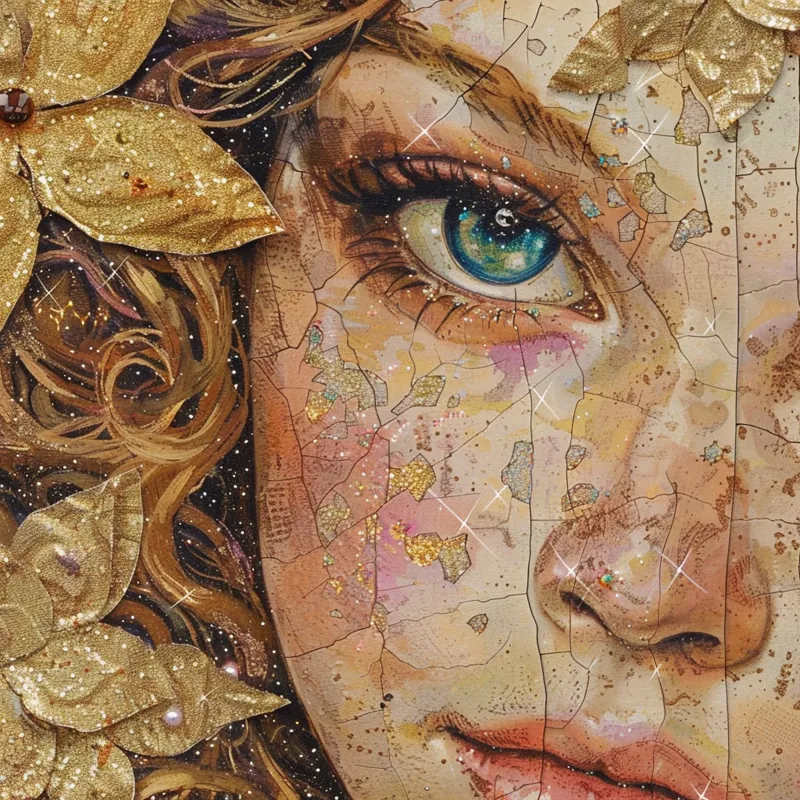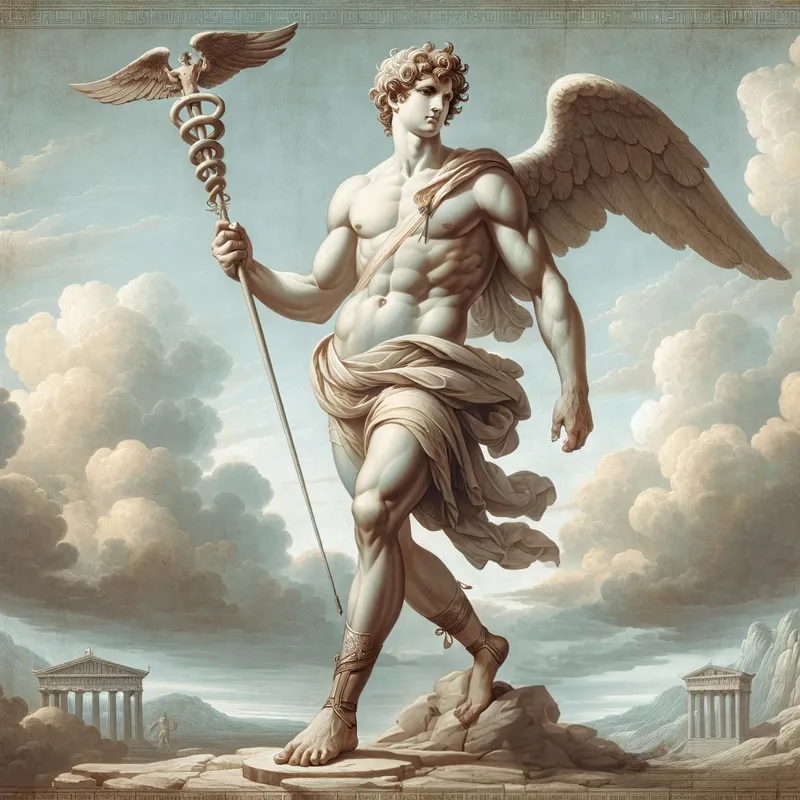
It gets better with age
In the enchanting world of Greek mythology, we encounter Hestia and Dionysus, two deities of remarkable importance, each embodying distinct but vital elements of both the human condition and divine essence. Hestia, the serene goddess of the hearth, symbolizes the warmth of home and the unifying bond of family, standing as a beacon of stability and domesticity.
In stark contrast, Dionysus, the ebullient god of wine and revelry, represents the liberating aspects of joy, ecstasy, and transformation, capturing the spirit of celebration and change. These deities, though vastly different, offer a comprehensive view of the ancient Greek ethos, intertwining the sacred and the celebratory in the tapestry of myth.
Origins and Family

By the light of my fire
Hestia is often described as the eldest daughter of the Titans Cronus and Rhea. According to myth, she was swallowed at birth by her father Cronus, who feared that he would be overthrown by one of his children, and later regurgitated after Zeus defeated Cronus. As the goddess of the hearth, Hestia's presence was integral to the daily life and inner workings of ancient Greek homes.
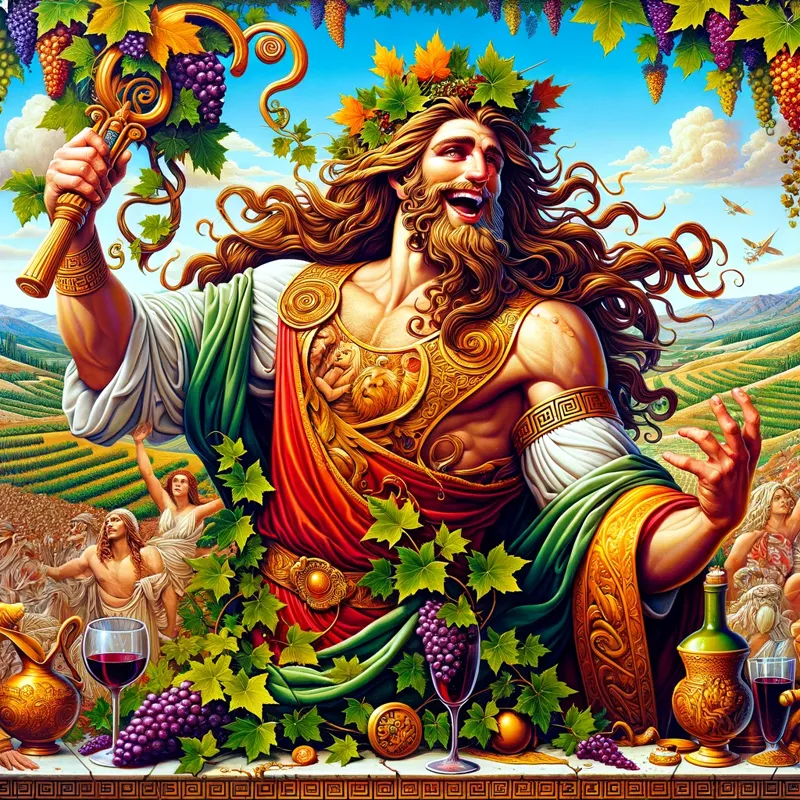
Drunk on life
Dionysus, known for his dual heritage as the son of Zeus and the mortal princess Semele, has a dramatic origin story that intertwines with themes of jealousy and divine intervention. His mother, Semele, becomes a victim of Hera's wrath. Hera, Zeus' wife, tricks Semele into asking Zeus to reveal his true godly form, an act that mortals cannot survive. Upon Zeus' obliged revelation, Semele perishes, but Zeus saves the unborn Dionysus by sewing him into his thigh, from where Dionysus is later 'born'.
This extraordinary birth, circumventing normal human childbirth, underscores Dionysus' connection with themes of rebirth and the cyclical nature of the vine, a core element of his domain. Dionysus embodies the paradox of joy and sorrow, creation and ruin, mirroring the dual aspects of wine and the complexities of the human condition. His narrative goes beyond mere mythological origins, serving as a profound allegory for the cycles of elation and despair inherent in life.
Attributes and Powers
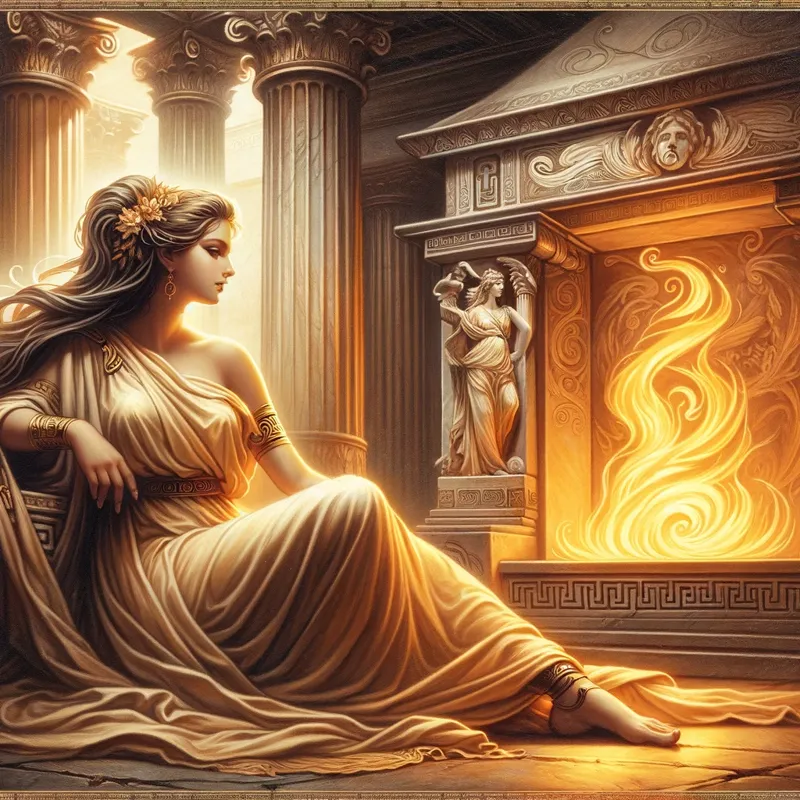
What must never go out
As the goddess of the hearth, Hestia represents the constant flame and is symbolic of the home and family unity. Her attributes include a gentle, non-confrontational nature, and she is often depicted as a veiled woman, serene and modest. Unlike many Olympians, Hestia doesn't have a series of myths centered around her adventures; instead, her power and respect are derived from her unwavering stability and presence in the gods' abode and mortal homes.

Seat of wisdom

Joy or sadness?
Dionysus, on the other hand, is a god of many facets, symbolizing wine, fertility, theater, and religious ecstasy. His attributes include the thyrsus (a pinecone-tipped staff), grapevines, and a crown of ivy. Dionysus is often depicted as youthful and effeminate, reflecting his patronage of the vine and life's pleasures. His dual nature brings joy and divine ecstasy, but also chaos and destruction, mirroring the effects of wine.

Breath in... Breath out...
Significance in Greek Mythology

The great renewal
Hestia's significance in Greek mythology is more subtle compared to her Olympian counterparts. She is not a part of dramatic myths or epic tales but is essential to the very fabric of daily Greek life and culture. Her vow of eternal chastity and her role as the keeper of the flame symbolized the stability and safety of the household. She was also honored in the public sphere, as her flame was kept burning in city halls and was never allowed to go out, symbolizing the city's welfare and unity.
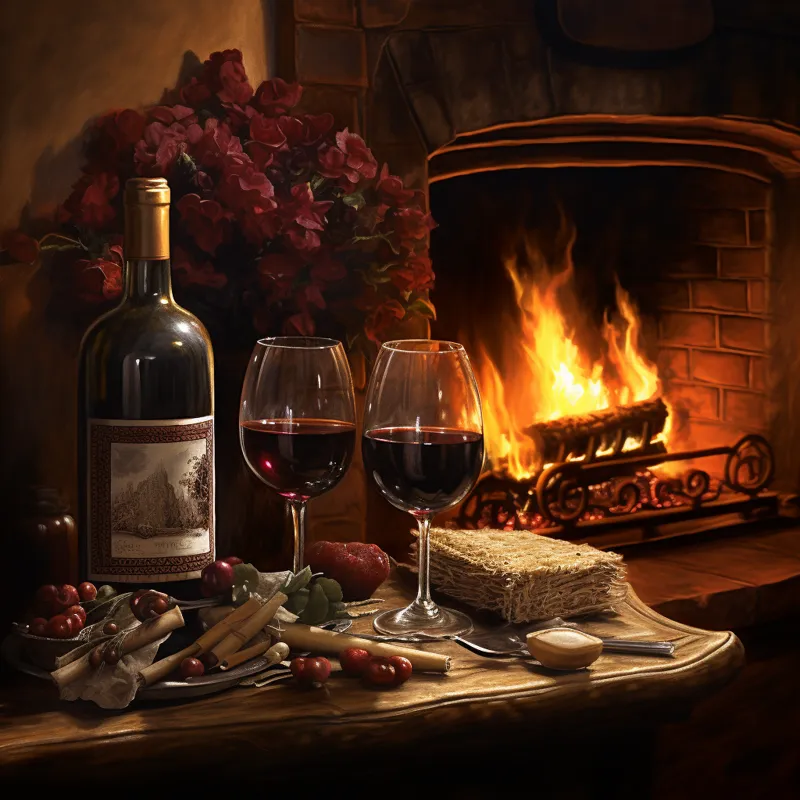
Reaping the rewards

Song of waking
The mythological narratives of Dionysus are replete with tales of joy, sorrow, and the complexities of human existence. As the only Olympian with a mortal parent, he faced rejection and underwent trials, reflecting the human experience. His followers, the Maenads, and their frenzied, ecstatic celebrations exemplify the liberating and overwhelming aspects of his worship. Dionysus' role in mythology goes beyond the god of wine; he represents the concept of resurrection and the cycle of life and death, a theme prevalent in many of his myths. Dionysus’ journey through the underworld and his ability to bring his mother, Semele, back to Mount Olympus also emphasize his connection to the afterlife and rebirth.

Party hard
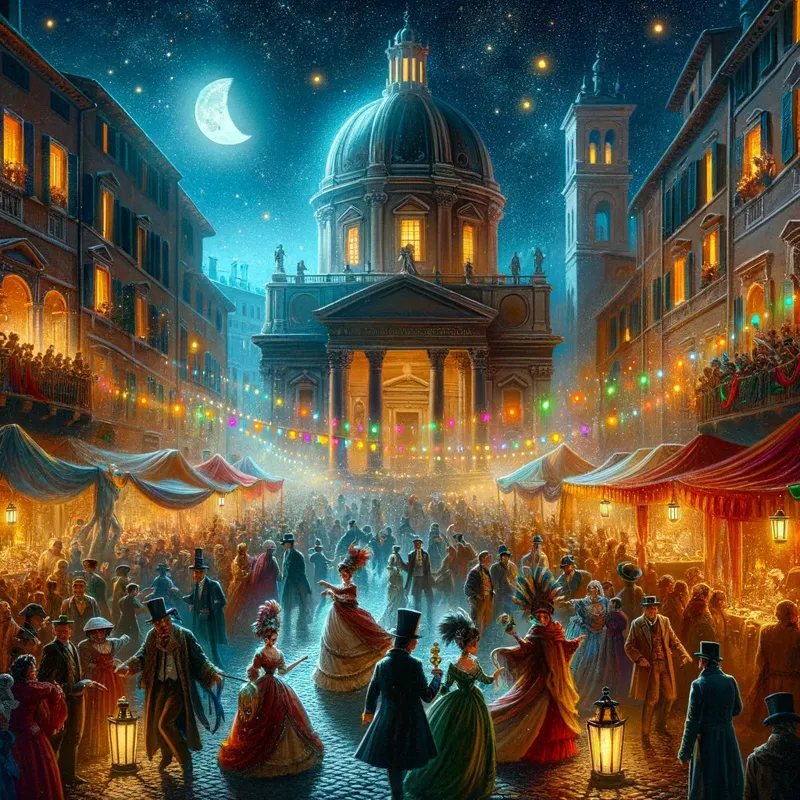
Long into the night
Worship and Cults

Lost in space
Hestia's worship was unique in its simplicity and ubiquity. There were no grand temples dedicated to her; instead, her altar was the hearth found in every Greek home. Each meal began and ended with an offering to Hestia, ensuring her continual protection over the household. Public hearths in city-states, where the flame of Hestia burned perpetually, served as places of asylum and symbolized communal unity and hospitality.

Lights will guide us home
Dionysus had a more flamboyant and widespread cult following, known for its ecstatic rituals and theatrical performances. The Dionysian Mysteries, a set of secret rites, celebrated his death and rebirth, symbolizing the soul's liberation from the mundane. These rituals were characterized by frenzied dances, consumption of wine, and the use of masks and music. Dionysus was also a patron of the theater, and his festivals, particularly the Dionysia, were occasions for dramatic competitions, blending religious devotion with the arts.
Representations in Art

A toast to life
In Greek art, Hestia is often depicted as a modestly veiled woman, sometimes holding a flowered branch, emphasizing her role as the gentle guardian of the domestic sphere. Her representations are less common compared to other Olympians, reflecting her passive, non-confrontational nature. However, in literature, she is often mentioned with respect and reverence, underscoring her importance in Greek culture.

The face beneath
Dionysus is vividly represented in various forms of Greek art. He is often portrayed as a youthful, bearded god in archaic art, and later as effeminate and youthful, reflecting his association with vitality and the vine. Artistic depictions frequently include his entourage of Satyrs and Maenads, showcasing scenes of revelry and ecstasy. His image evolved over time, mirroring his complex and multifaceted nature.

Who we are when no one's watching
The Symbolic Transition

First impressions
The story that intertwines Hestia and Dionysus is not of direct interaction but of transition. In some accounts of Greek mythology, Hestia, the goddess of the static, eternal flame of the hearth and home, voluntarily relinquished her seat among the Twelve Olympians to Dionysus, the god of dynamic, transformative ecstasy. This act was not one of defeat or weakness but of generosity and understanding of the evolving nature of divine and human realms.

'It' lies beyond the fantasy
This transition can be seen as a metaphor for the balance between stability and change, between the eternal peace of the hearth and the transformative ecstasy of wine and festivity. Hestia’s quiet, nurturing presence gave way to Dionysus' vibrant and dynamic energy, reflecting the Greek appreciation for both the sanctity of the home and the importance of celebration, emotion, and the arts.
In sum, the story of Hestia and Dionysus is a narrative of contrast and complementarity, symbolizing the ever-shifting balance between different but equally vital aspects of life. Hestia's calm and stable hearth and Dionysus' wild and ecstatic vine offer a holistic view of the Greek understanding of the world, encapsulating the idea that harmony is found in acknowledging and respecting both the serene and the tumultuous facets of existence. Their stories, individually rich and collectively profound, encapsulate key aspects of human experience – the need for both the security of the familiar and the thrill of the unknown.


